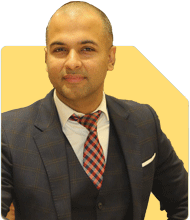51 Year Old Wife, 45 Husband & 17-Year-Old Son Seeking Medical/Health & Pension Plans: What are the best options?
Ramalingam Kalirajan |8204 Answers |Ask -Follow
Mutual Funds, Financial Planning Expert - Answered on Nov 02, 2024
He has an MBA in finance from the University of Madras and is a certified financial planner.
He is the director and chief financial planner at Holistic Investment, a Chennai-based firm that offers financial planning and wealth management advice.... more

I am 51 years wife 45 years & a son 17-Year-old. Planning to take a medical / health plan for family with 10 lacs cover & Pension /Retirement plan with one time investment say Rs 5Lacs or so for retirement (looking to get at least Rs 10 to 20 K per month) can you suggest me the best plans.
Health Insurance Plan for Comprehensive Family Coverage
With health insurance, a robust plan protects against rising medical costs. At your age, a cover of Rs 10 lakh can provide adequate safety. Here’s what to consider:
Family Floater Plan: A family floater policy can be cost-effective. It offers a single cover for all family members under one premium.
Cashless Network: Check if your preferred hospitals are within the insurer’s network. This ensures cashless treatment, reducing out-of-pocket expenses.
Coverage for Pre-Existing Diseases: Many policies cover pre-existing conditions after a waiting period. Choose one with a shorter waiting time.
No-Claim Bonus: Plans offering no-claim bonuses or annual sum increases can provide higher coverage at no extra cost if you remain claim-free.
Consider Super Top-Up Plans: A Rs 10 lakh super top-up plan on top of a base policy can increase your coverage affordably. This approach offers higher protection against serious ailments.
Choosing a Retirement Solution for Monthly Income
For a reliable retirement income, investing Rs 5 lakh as a one-time payment can be a good start. However, let’s explore options to make the most of this investment:
Avoid Annuities: Annuities lock funds and often provide lower returns than other investment vehicles. Flexibility is limited, and returns may not outpace inflation.
Consider Balanced or Hybrid Mutual Funds: These funds balance between equity and debt, targeting steady growth with moderate risk. Over time, they can offer regular returns and capital appreciation.
Invest in Dividend-Paying Funds: Select funds that provide periodic dividends. They can supplement monthly income. However, returns are not guaranteed and vary with market performance.
SWP from Mutual Funds: Systematic Withdrawal Plans (SWP) allow fixed monthly withdrawals from mutual funds. This option gives you flexibility in choosing withdrawal amounts and intervals. The remaining investment continues to grow, providing both income and capital appreciation.
Tax Considerations: If you redeem equity mutual funds, the long-term capital gains tax (LTCG) above Rs 1.25 lakh is at 12.5%. Short-term capital gains are taxed at 20%. For debt funds, gains are taxed per your income tax slab. Keeping these in mind can help you plan tax-efficient withdrawals.
Benefits of Actively Managed Mutual Funds Over Index Funds
While index funds are popular for low-cost investing, actively managed funds often suit retirement goals better:
Higher Potential for Outperformance: Unlike index funds, actively managed funds are guided by experienced managers who adjust based on market trends. This approach can yield better returns over time.
Flexibility and Downside Protection: Active fund managers can limit exposure in volatile markets. They may switch to safer assets in tough conditions, reducing potential losses. Index funds lack this adaptability, potentially exposing you to greater risk during downturns.
Maximising Benefits Through Regular Plans over Direct Funds
Direct funds charge lower fees, but they require significant expertise and time. Regular funds, through a Certified Financial Planner (CFP), offer critical benefits:
Expert Guidance: A CFP with Mutual Fund Distributor (MFD) credentials can help optimise your fund choices. They bring insights into market conditions, ideal fund categories, and timing for maximum returns.
Reduced Management Burden: By opting for regular plans, you gain from continuous oversight. CFPs monitor performance, ensuring adjustments as per market trends, without requiring your constant involvement.
Financial Security Through Systematic Investments
To ensure retirement security, consider adding to your current investment strategy with these approaches:
Set Up SIPs for Long-Term Growth: Regularly investing in mutual funds through SIPs builds wealth over time. Even modest amounts grow substantially over extended periods, giving you financial security.
Diversify Across Fund Types: Balancing between equity and hybrid funds reduces risk while maximising returns. Equity funds, for instance, yield high returns in the long run, while hybrid funds add stability.
Planning for Your Son's Future
With a 17-year-old son, education or other large expenses might arise soon. To prepare:
Education Funds: Start a dedicated fund for higher education. Opt for balanced or conservative equity funds for stable growth with moderate risk.
Insurance for Financial Security: Ensure life cover through term insurance, sufficient for his needs. A term plan gives affordable protection, supporting his future if needed.
Final Insights
Investing Rs 5 lakh for retirement income and Rs 10 lakh in health insurance secures both financial and health-related aspects of your future. With careful planning, regular reviews, and a mix of funds, your goals are achievable. Align investments with a Certified Financial Planner’s guidance to maximise growth and peace of mind.
Best Regards,
K. Ramalingam, MBA, CFP
Chief Financial Planner
www.holisticinvestment.in
https://www.youtube.com/@HolisticInvestment
You may like to see similar questions and answers below
Ramalingam Kalirajan |8204 Answers |Ask -Follow
Mutual Funds, Financial Planning Expert - Answered on May 27, 2024
Ramalingam Kalirajan |8204 Answers |Ask -Follow
Mutual Funds, Financial Planning Expert - Answered on May 28, 2024
Ramalingam Kalirajan |8204 Answers |Ask -Follow
Mutual Funds, Financial Planning Expert - Answered on Jun 06, 2024
Ramalingam Kalirajan |8204 Answers |Ask -Follow
Mutual Funds, Financial Planning Expert - Answered on Jul 25, 2024
Samraat Jadhav |2250 Answers |Ask -Follow
Stock Market Expert - Answered on Apr 08, 2025
T S Khurana |438 Answers |Ask -Follow
Tax Expert - Answered on Apr 08, 2025
T S Khurana |438 Answers |Ask -Follow
Tax Expert - Answered on Apr 08, 2025
Mihir Tanna |1043 Answers |Ask -Follow
Tax Expert - Answered on Apr 08, 2025
Harsh Bharwani |79 Answers |Ask -Follow
Entrepreneurship Expert - Answered on Apr 08, 2025
Milind Vadjikar |1157 Answers |Ask -Follow
Insurance, Stocks, MF, PF Expert - Answered on Apr 08, 2025
Milind Vadjikar |1157 Answers |Ask -Follow
Insurance, Stocks, MF, PF Expert - Answered on Apr 08, 2025
Milind Vadjikar |1157 Answers |Ask -Follow
Insurance, Stocks, MF, PF Expert - Answered on Apr 08, 2025
Milind Vadjikar |1157 Answers |Ask -Follow
Insurance, Stocks, MF, PF Expert - Answered on Apr 08, 2025
Ramalingam Kalirajan |8204 Answers |Ask -Follow
Mutual Funds, Financial Planning Expert - Answered on Apr 08, 2025

























.jpg)